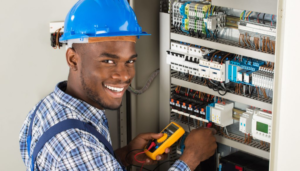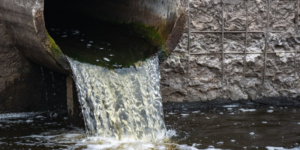Having a licensed electrician oversee the installation of your home EV charging station is critical for safety. They will follow all electrical regulations when hardwiring the charger and installing an outlet and be familiar with local permitting processes to avoid voiding homeowners’ insurance policies.
The installation cost can also increase if your home’s existing electrical circuit requires major upgrades to handle an EV charging load. For example, your meter box may need to be upgraded. Contact Home EV Charging Station Installation now!

Home EV charging station installation costs can vary depending on the type and location of the charger, the existing wiring, the power supply capacity and other factors. A professional electrician will be able to determine the best options for you and help you keep your home charging station cost low. Choosing a licensed and experienced electrician will also ensure that your home EV charger is installed in compliance with local codes and electrical standards.
The most common option for home EV charging is a Level 2 charge station. This is a plug-in outlet that can be used to recharge most electric vehicles. It uses standard household outlets and can usually be installed in a garage or driveway. This will typically cost between $500 and $1000, with the electrician’s work and materials included.
A breaker box is a metal box that houses circuit breakers or fuses within a residential property. It receives electricity from the utility and distributes it to other outlets throughout a house. If a homeowner installs an EV charger in their home, it may be necessary to upgrade the breaker box to handle the additional load. Failure to do so can lead to over-loading of the breaker, which can result in a tripped breaker or even an electrical fire.
Some EV charging stations offer Wi-Fi connectivity, which can make it easier to monitor and control the charging process. This is especially beneficial for EV drivers on time-of-use utility plans, as they can manage their charging times to maximize their savings on electricity.
Many EV owners choose to place their charger in their garage or driveway. This helps them keep their vehicle more protected from the elements and reduces the need for public charging. In addition, the presence of an in-home charger increases property value, making it a worthwhile investment for homeowners who plan to sell their homes in the future.
While a home EV charging station can be self-installed by qualified individuals, it is recommended to have a licensed and experienced electrician perform the installation. This will not only ensure that the EV charger is correctly installed and complies with local electrical code requirements, but it will also increase the safety of the installation. A licensed electrician will also understand local electrical standards and be able to provide a more accurate estimate of the overall home EV charging station installation cost.
Installation time
The installation time of an EV charging station can vary widely, depending on several factors. These include the type of home charger you choose and its features and capabilities, as well as whether your electricity provider offers incentives and rebates for installing a home charger. You should also check to see if you are eligible for any grants that might reduce the cost of the installation. Finally, you should make sure that the installation company has access to the area where the EV charger will be installed.
EV charging stations come in a variety of sizes, designs, and speeds. They also offer a range of smart functionality. Some EV chargers are even connected to smart grids that monitor the power consumption of a home and optimize charging times. This can help you save on your electricity bills and make EV driving more convenient.
While EV chargers are relatively easy to install, the best option is to hire a professional electrician. This is because electrical work is dangerous and requires a high level of expertise to avoid mistakes. It’s important to ensure that the installation company you choose is licensed and insured, so that you are protected in case something goes wrong.
Some EV chargers are shipped with installation included in the price, while others require additional services from a third-party installer. The place you buy the EV charger from will usually provide a list of qualified and approved technicians in your area. In either case, you should make sure that the installation is fully outlined in the contract so that you’re not surprised by any extra charges later on.
Another factor that can affect the installation time of an EV charging station is the capacity of your house’s electrical circuit. Depending on the amperage that you use at peak times, your home may need to have its main fuse upgraded to accommodate the increased load of EV charging. This can add weeks to the overall timeline of your EV charger installation.
EV chargers can be expensive, but they’re an essential part of the EV experience. In addition to reducing emissions, they can save you money on fuel and maintenance costs. Home EV charger installations can also be used in conjunction with solar energy systems to further reduce household energy costs.
Safety
Home EV charging is a regular part of most EV owners’ lives, and it’s important to follow safety protocols when doing so. Home EV charger installation requires working with high-voltage electricity, and even the most experienced DIYers should not attempt it on their own. Doing so may not only put the user at risk of injuries or property damage, but it also can result in expensive repairs and voided manufacturer warranties. It’s best to hire a licensed electrician to install your charger.
When choosing a home EV charger, consider whether you want to install a hardwired or plug-in version. The former is more permanent and may require a permit. The latter is more portable, and it’s easier to use if you change your vehicle in the future.
If you’re installing a hardwired EV charger, make sure it has an Underwriters Laboratories (UL) or Intertek (ETL) certification. These are independent safety organizations that certify products meet industry standards. While many cheap home EV chargers and mobile charging cords skip this step to keep the price low, it’s well worth the extra cost for safety reasons.
The capacity of your home’s electrical circuit is another crucial factor. Most EV chargers draw 24 to 80 amps, so you’ll need to be certain your home can handle the load. You can check this by looking at the maximum capacity of your house’s main fuse in the breaker box. Alternatively, some EV charger equipment can automatically lower the charge rate to prevent exceeding the maximum capacity of your home’s system.
It’s also important to keep the area around your home EV charging station clean and clear. This helps to reduce fire hazards and ensures proper ventilation during the charging process. In addition, a clear charging space makes it easy to identify any problems with the charger or cable.
EV chargers can be installed in most homes, and it’s becoming increasingly popular to include them in new construction. This can help a homeowner get a better return on investment when selling the home or renting it out. Homeowners can also save money on fuel costs by charging their EVs during off-peak hours.
Warranty
EV charging stations can be installed at home to make it easier for EV drivers to charge their vehicles. They can also save money on energy costs, especially when combined with solar power systems. In addition, many home EV chargers can be easily maintained and repaired by a qualified electrician.
A good EV charger installation company offers warranties on their work. These warranties can cover installation and repair services for a specific period of time or up to the manufacturer warranty. Some companies also offer extended warranties for the equipment they install. These warranties help increase customer confidence and build trust with the company.
In addition to the warranty, an EV charger installation company should be licensed and insured. This is important to ensure the safety of the customer and their property. In addition, it is important to follow EV charging station installation standards, such as those set by UL. This will help prevent faulty installations and ensure the customer is satisfied with their service.
Another key factor is ensuring that the installer is familiar with the local electrical codes and regulations. This can help them avoid problems with the installation process, such as code violations or violations of EV charger standards. Moreover, they should keep up to date on the latest changes in these codes and standards, as they may vary from jurisdiction to jurisdiction.
EV charging station installation is complex and requires a professional to complete it correctly. The EV charger must be properly wired to the home’s breaker box and should be placed in a safe location. Moreover, the homeowner will need to upgrade their master breaker panel to accommodate the higher amperage of the EV charger. A licensed electrician can determine whether an upgrade is needed and recommend the best location for the charger.
EV charger installation can be expensive, but it is an investment that will pay for itself over time. Home EV charging station installation can also save homeowners money on energy bills and reduce their carbon footprint. In addition, a home EV charging station can be a great selling point for a real estate listing.
